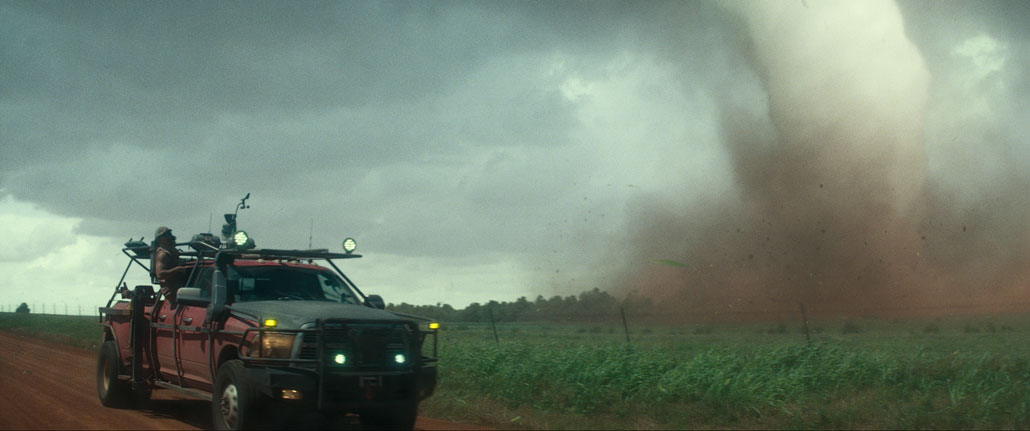Extreme Climate Survey
Scientific news is collecting questions from readers about how to navigate our planet’s changing climate.
What do you want to know about extreme heat and how it can lead to extreme weather events?
As in the previous film, twisters’ the protagonists want to help people affected by these very destructive forces of nature. In the 1996 film, Jo Harding, played by Helen Hunt, set out to collect enough data to create an advanced warning system. IN Twistersscientific stakes have escalated. Kate has a theory on how to destabilize or “smooth” a tornado. But is such a thing possible?
Scientific news went to the movies with Maria Molina, a meteorologist at the University of Maryland in College Park, to find out just how much Twisters is based on reality and how much is involved in the stormy story. We also spoke with Kevin Kelleher, retired director of the Global Systems Laboratory at the US National Oceanic and Atmospheric Administration’s Earth System Research Laboratories. He worked as a technical consultant in 1996 Twister and spent more than two years as a tornado consultant Twisters.
After all, Twisters it’s a movie, so no one can really walk into the theater thinking this is going to be a perfect, scientifically accurate portrayal of weather phenomena about which, in reality, we know so little.
“Even after 30 years from the first movie until now, we really don’t know exactly how tornadoes form,” says Kelleher. “We know how the rotation starts in the mid- and upper-level sections of the storm and goes all the way to the surface. But we know now that’s not the whole story.”
Molina still calls the film fun, and she chuckled knowingly at some of the science elements she recognized along the way. “They tried to do quite a few things right,” she says.
Warning: Spoiler for Twisters below.

OK, so is it really possible to destabilize a tornado?
When we first meet Kate, she and her research team are trying to dampen a tornado by releasing a polyacrylate chemical into the tornado’s funnel. According to Kate’s theory, the chemical, a type of polymer, will absorb the moisture in the air that serves as fuel for the tornado, causing it to die out.
“I think that was something that maybe, for me, was giving me some chills,” says Molina.
Kelleher admits this is the film’s most fantastical plot point. However, he explains that there is some basis for the idea. Some polyacrylates are superabsorbent polymers that can hold up to 1000 times their weight in water. In theory, if you injected enough polymer into the tornado funnel, it would absorb the moisture and then the water would fall to the ground, thus having some effect on the storm.
“Of course, it’s a matter of scale,” he says. “You can’t imagine getting enough of this chemical in the storm to make a difference.”
Of course, a modified version of Kate’s experiment works in the third act to save the day, but Twisters the characters acknowledge that their quest still has a long way to go. Javi tells Kate that people may doubt her success and claim that the tornado died on its own or was reduced due to some other extreme weather event.
“Scientifically, that’s what I’d say, right?” says Molina. “I would say, ‘You don’t have a control tornado to make sure we understand every part of the dynamics in it.'”
Film scientists use radar to make 3-D models of tornadoes. Is this realistic?
For much of the film, Javi and the team use phased array radars, or PARs, to capture tornado scans (SN: 9/4/23). They triangulate three PARs around each tornado to create a 3-D model in order to better understand how tornadoes form, which in turn leads to a better ability to predict storm formation and distribution.
According to Molina, this happened on the spot.
“It was really nice,” says Molina. “So from NOAA’s National Severe Storms Laboratory, they have field crews that go out and take scans using [this] radar… [and] when they’re trying to capture a supercell in the field, they put three around it to get that full perspective.”
Twisters definitely plays the actual risk factor, according to Kelleher. In the film, Javi’s research team brings the radars “extremely close to the storm,” placing them on the ground to get accurate data. In reality, most of these radars in the field would be much larger than portrayed in the film, allowing them to stay further away from the storm and remain attached to the trucks.
What’s the deal with the fire tornado seen in the trailer? Could it actually happen?
A fire tornado, or “firenado,” appears briefly in the film, and unlike the infamous “sharknado” of TV movie fame, “it’s really not a stretch,” says Kelleher (SN: 9/9/18)
“I actually liked that they put that in there,” says Molina. “In California, there have been quite a few fires over the past few years. And there were reports of a fire occurring as a result of the heat.”
Kelleher also says wildfires can form their own storms that can have the characteristics of supercell storms. Such storms have a strong and persistent upward draft called a mesocyclone that can lead to tornadoes.
How does this film address the issue of climate change?
Despite the fact that it is about extreme weather phenomena, Twisters never mentions the phrase “climate change”. Kelleher explains that the studio wanted to sensitize people to the dangers “without being preachy.”
Also, researchers don’t quite know what to predict about tornadoes and climate change. According to Molina, it is unclear whether there will be more tornadoes in the future due to changing climate conditions. The issue always comes back to the lack of data.
However, decadal trends in tornado behavior provide some clues (SN: 18.10.18).
“Trends are that the traditional Tornado lane is widening,” says Kelleher. “It’s not really moving away from the traditional tornado path, but it’s expanding eastward into Arkansas, Mississippi, Alabama. And those tornadoes are showing up and getting bigger.”
How do scientists feel about self-taught storm chasers?
Unlike its 1996 predecessor, Twisters shows storm chasing from two very different perspectives: professionally trained research scientists and self-taught enthusiasts in the field.
“With our phones, everyone now has ready access to radar data and most of the data that meteorologists have, and so tracking tornadoes has become a big thing,” Kelleher says.
Molina enjoyed seeing how many enthusiasts there were at the gas stations and hotels the protagonists visited, and says that’s pretty accurate to how the field looks now.
“If someone is following for fun and just because of their curiosity, that’s, you know, good for them,” says Molina. “They are capturing video. We can use that video. We’ve learned a lot about tornadoes through videos.”
However, too many followers in the field can cause problems. A common complaint from researchers that Molina and Kelleher both point out is congested roads or traffic jams that can prevent scientists from setting up their equipment in the field or arriving at the scene in time. Molina mentions how this can sometimes lead to unsafe driving Twisters portrayed between two main groups of followers as they race to see who reached a storm first.
Kelleher also points out that the film depicts the actions of people who, he believes, get too close to storms and put themselves in danger.
“These are extremely dangerous forces of nature that you don’t want to mess with at all,” Kelleher says. “So don’t try to think you can walk into a tornado and survive it. It just can’t be done.”
#Twisters #asks #tame #tornado #answer
Image Source : www.sciencenews.org



